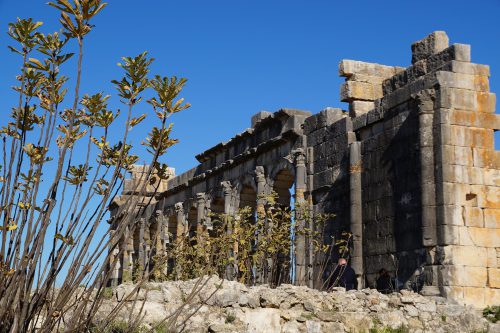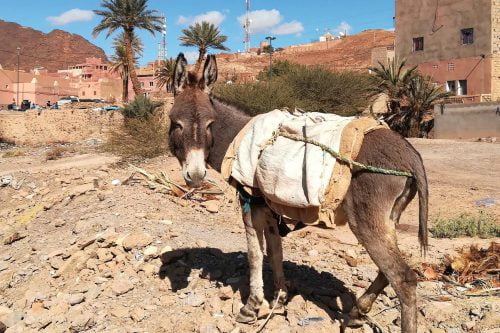Description
“Before Marrakech, everything was black. This city taught me colour, and I embraced its light, its insolent mixes, and ardent inventions.”
Yves Saint Laurent
Yves Saint Laurent perfectly described Marrakech, one of the four imperial cities of Morocco. It’s impossible not to be fascinated by the blue of its sky,the pink of its city wall, the thousands of colors of its souks brimming with beautiful and unique handicrafts. Visiting its palaces, enjoying its museums, letting ourselves be overwhelmed by the daily evolution of Jemaa El Fna square (inserted in the UNESCO Lists of Intangible Cultural Heritage), getting lost in the medina’s narrow streets (UNESCO World Heritage Site in 1985)…it’s all something to do at least once in a lifetime.
The medina of Marrakech, enclosed in its unmistakable wall entirely built with the Rammed earth technique (an ancient technique that consists of “pressing” and mix the earth with water, hay and natural fibers), spaced out by several bab (gates), it’s a triumph of colors, sounds (or better-said noises), smells and flavors.
Once the explosions of sounds and colors of this wonderful city are left behind, you can enjoy, even just for one night, the peace and tranquility of the desert: Merzouga awaits you.
After a day in Marrakech we’ll leave towards the desert crossing the High Atlas mountain range. After a 2-hour ride along a road dotted with small villages, we’ll reach the Ouzoud Falls, the highest ones in the country with a 100m multi-step fall. This part of the trip is particularly fascinating in the first months of the year during the blossoming of the almond trees which this area is rich in. The falls can be reached with a 30-minute walk, the trail is not difficult and it’s for everyone; with an additional 30-minute walk down-hill you can reach the bottom of the valley where by paying a small amount of money, it’s possible to get close to the falls by boat. It goes without saying that the way back is all uphill!
After the falls, we will reach Beni Mellal, a fascinating town located right in the center of Morocco. It was originally a fortress called Ismali funded in the XVII century; around the two kasbahs which date back to that period the rest of the town developed through the years. From a cultural point of view this town is known for the music and dance schools whose teaching methods are based on the Arab and Berber popular tradition with influences from the Bedouin and Mediterranean traditions.
The charming market is worth a visit: it is still mostly used by the locals thus it’s full of traditional products not purposely made for tourists.
When arriving at or leaving Bei Mellal it will be impossible not to notice the endless cultivations of olive and orange trees.
From Bei Mellal, we’ll head to Imilchil, a village famous for its yearly “moussem” (festival) dedicated to weddings. Today the festival is one of the few occasions in which young men and young women can freely choose who they want to get married to.
After the visit to the nearby lakes, it’s time for the Dadès valley; following a mountain winding road we’ll pass through the town of Agougal and the scenographic Dadès gorges and we’ll reach Boumalne Dades where we’ll be spending the night.
When we leave Boumalne, we’ll visit the oasis of Tinghir and the Todgha gorges to then reach Merzouga, a small town on the edge of Erg Chebbi, a stretch of high dunes where you’ll finally meet the sand of the Sahara desert,
on the edge of which, we’ll leave the car to reach by dromedary riding the campsite where you’ll spend the night, after relishing the sunset on the desert.
The following day will be dedicated to the exploration of the desert, its world and its inhabitants. You’ll be welcomed by a nomadic family and you’ll savor the Berber cuisine and enjoy life in the desert.
We’ll then leave the desert to head towards Agdz passing through Rissani where we’ll stop to visit the busy and vibrant local market. We’ll continue through landscapes that recall the “American far-west” to reach the Valley of the Draa dotted with palm groves and traditional villages. Along the way it’s a must to stop by Alnif at the end of a lunar-like valley of red earth and rocks to buy some caraway that here it’s famous for having a particularly intense small (Slow Food Ark of Taste).
After the night in Agdz, we’ll visit the ksar of Tamnougalt, considered by many one of the most beautiful of Morocco. It is a proper fortress with a defensive function located in a strategic point along the caravan route from Marrakech to Timbuktu.
Tamnougalt is where Bernardo Bertolucci filmed most of the interior scenes of his film “The Sheltering Sky.”
We’ll spend the rest of the day in Ouarzazate – built by the French in the 1920s as a French Foreign Legion’s outpost toward the Sahara desert on the crossroads of the Draa and Dadès valleys– which will allow us to visit the kasbah of Taourirt and the Atlas Studios; Ouarzazate and its surroundings are often used as film locations for movies set not only in Morocco but in other places as well.
Our journey begins with the visit of Ksar of Ait-Ben-Haddou, UNESCO World Heritage Site since 1987. Just before making it over the pass and begin our downhill towards Marrakech, we’ll stop to visit the Kasbah of Telouet, perched in the Atlas Mountains.
The Tour Includes
The Tour Does Not Include
Write and tell us what you have in mind, we will suggest the perfect itinerary for you based on the dates of your trip!

